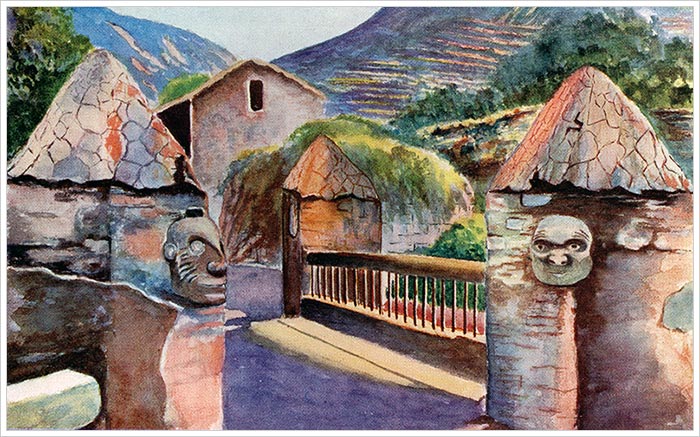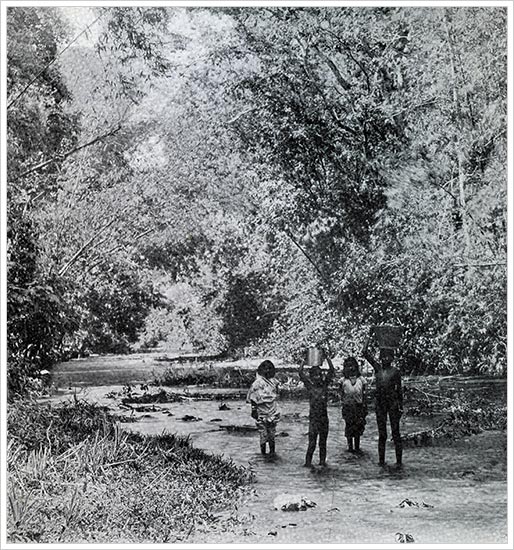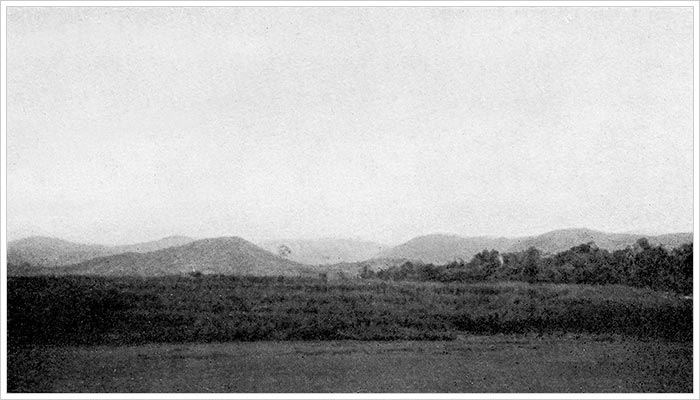Gold, Silver, Emeralds, and Pearls, Part 1
For several years I was engaged rediscovering old mines for M. M. Penny and others. It was a simple matter to find out whether any mine was worth opening again. If there were no dumps outside, and the tunnels were well ventilated, then the mine invariably proved a rich one. I have come across many such both in Peru and Bolivia. On the other hand, a lot of small excavations and a number of dumps visible, was a bad sign.
I shall never forget rediscovering the Carmen mine mentioned in Adventures in Bolivia. This was shown me by an old Indian of ninety. He also told me it was untrue that the Indians were cannibals. It was only after a fight, and to show how they despised their enemies, that they would cast junks of flesh, limbs, etc., of the fallen, on the fire. They certainly chew pieces, but always spit them out afterwards. He was the father of five or six of Penny’s miners. One of them helped my old muleteer, Simon Cruz. He was engaged for me by my old cook, Manuel Maldonado, who died of fever. I stayed with the Indians two months, prospecting and taking samples from Mount Sapo. The river which runs below the Carmen mine is called Corimayo, or Crown of Gold.
From this place the way to Sacambaja leads over the Calatranka range. It is imperative to keep one’s head covered in this atmosphere, even when sitting about after dark; the changes of temperature are so sudden. In many of the villages situated in the high terraces of the Andes, only altitude saves the Indians from sudden death, their habits are so insanitary. There will ever remain in my memory the scent of one street in Oruro!
Chinchillas, the little animals that provide the beautiful and expensive furs so much admired by ladies, are found in the Cordilleras, between 12,000 ft. and 16,000 ft. up. The very finest Chinchilla Reals come from the high mountains of Peru. They are of a beautiful smoke blue tinge, and are worth £500 a dozen. Next in value come the Chinchilla Reals of Bolivia. £240 a dozen is their worth. The first-class Moscatas fetch £180, and the second-class Moscatas £90. The Chinchilliun, a very pretty little fur, obtained by crossing a Chinchilla with a rat, is valued at £20 a dozen. Pelts of the Chinchilla rat are also worth money. These are the prices ruling in London to-day (1923). The Indians use the Furot, a small animal not unlike a ferret, in their trapping expeditions. They value a good Furot at as much as £30. I had to pay £1 for a skin.
To get to the Oroya mine one has to travel from Lima by the Central Railway of Peru, the highest point on this line being 15,565 ft. above sea-level. On the way up you pass San Mateo (10,584 ft.). Oroya is perched at an altitude of 12,175 ft. Just beyond lies the great Cerro Pasco mine, owned by J. D. Haggen, McEwan, and Gentry. These gentlemen spent two million dollars before they got any return. Only one man of the original claim holders, Gallo by name, had done any development work, and he had employed about fifty men. To him Haggen and Co. paid out £56,000. The other holders, who had idled away their time waiting for something to turn up, got nothing. The last time I saw Gallo was at Lima, looking very unhappy in a top hat and frock-coat. After his loose mining gear I dare say his fashionable “clobber” made him feel very uncomfortable. That, however, didn’t prevent him from admiring a fine pair of Clevelands he had recently acquired.
A two-days’ ride on horseback brings one to the fertile valley of Chalapata, where much sugar is grown for conversion into rum and chancaca. The Paroma district occurs three days’ ride further on. Several different sorts or species of potatoes are grown here, and the Indians breed many sheep, cattle, horses, and mules. The mules are very fine, and frequently fetch £70 apiece. Horses are obtainable at from £8 to £20, and are not up to much as may be imagined.
In the forests round about are to be found little bears having tails almost equalling the length of their bodies. The Indians make pets of them, and a friend of mine had one that would drink out of a bottle, and peel bananas like a monkey. Several sorts of monkeys make these forests their home. The Indians say they are good eating, especially the one known as the Red Howler. Of the others, there is a very pretty monkey, much after the style of the Samonga of Zululand. Its fur is long and silky, and bluish grey in colour. The Indians have no use for monkeys, other than as provender, but are always ready to barter their pelts for axes, knives, and other implements.
I got quite a nice parcel of gold here. Part I bought of the natives, and part was washed out by my own Indians. The hills all around are rich in silver and copper as well as gold. One can continue on this route right down to Iquites, passing through league after league of rubber trees. Cinchona and most of the valuable trees indigenous to the tropics, may also be met with. This part is very sparsely populated; but an influx of population may be expected when the railway [is] extended from Aroya. Land which has been very cheap will then appreciate in value.



